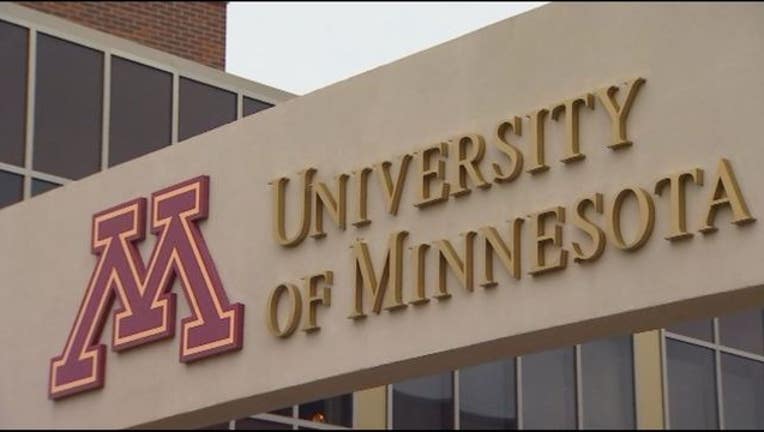University of Minnesota return to campus housing plan includes 10-day quarantine, curfews

MINNEAPOLIS (FOX 9) - The University of Minnesota is letting students back on campus later this month with strict quarantine rules in place to slow the spread of the coronavirus.
Under the "Maroon and Gold Sunrise Plan" residence hall students can start moving in on September 15 on the Twin Cities campus. The move-in date for the Duluth campus is Sept. 9, and it's Sept. 18 for the Rochester campus. The Board of Regents voted to delay the original move-in dates by two weeks following COVID-19 outbreaks at other universities nationwide, and required all classes to be held online for the two-week period.

University of Minnesota return to campus housing plan includes 10-day quarantine, curfews
The University of Minnesota is letting students back on campus later this month with strict quarantine rules in place to slow the spread of the coronavirus.
On all three campuses, the university will require students to mostly stay in their dorm rooms for the first 10 days, unless they're going to an in-person class, the dining hall, or other limited exceptions. If it goes well, the school would replace the quarantine with a 9 p.m. curfew.
"I don’t think I can be anything but honest with you. That first period is not going to be much fun," U of M president Joan Gabel told lawmakers on the Senate Higher Education committee Tuesday. "What we’re trying to do is find a really narrow balance between safety and campus life."

University of Minnesota return to campus housing plan includes 10-day quarantine, curfews
The University of Minnesota is letting students back on campus later this month with strict quarantine rules in place to slow the spread of the coronavirus.
The plan got mostly positive reviews from lawmakers on the Republican-controlled committee. But one GOP senator said being stuck in a small dorm room would negatively affect students' mental health.
"I didn’t hear many bullet points that would make a student want to come on campus," said state Sen. Scott Jensen, R-Chaska.
"This is the way we think we can do it and sustain it," Gabel explained.
A student sitting outside a dorm Tuesday said the plan sounded "responsible."
"It's something you want to say and hope people abide by, but it's one of those things that it's not really feasible to make people do," the student said.
For another student, the restrictions just made the whole experience not worth it.
"I'm going to community college this year instead," they said. "I'm taking a leave of absense becasue I don't want to pay for it."
Once the students move in, the process will follow four steps to slowly increase student access across campus. At any point, university leaders can choose to extend the length of a step or go back to a previous step in the process. Under all steps of the plan, students are asked to maintain social distancing and wear masks outside of their rooms.
Step 1:
- For about 10 days, students will live and learn nearly exclusively in their residence hall.
- Students are urged not to visit other residence halls, businesses or off-campus housing. Exceptions include attending any in-person classes, using dining or campus health facilities, going to work, tending to family emergencies, or being outdoors while physically distancing.
- Exceptions include attending any in-person classes, using dining or campus health facilities, going to work, tending to family emergencies, or being outdoors while physically distancing.
Step 2:
- If Step 1 goes successfully, access will increase for students in university housing. They will be able to visit all on-campus locations and the nearby community.
- Students will have a 9 p.m. curfew to return back home.
- This step is expected to last two weeks.
Step 3:
- Students will have the same access described under Step 2.
- The curfew will be extended to midnight.
- This step is expected to last two weeks.
Step 4:
- The amount of access remains the same as under Step 2.
- There will no longer be a curfew.
Move-in already took place on the Crookston and Morris campuses.
Minnesota State, private colleges detail reopening plans
Enrollment is down across the Minnesota State system by 6 percent, while Minnesota's 17 private colleges have seen an average decline between 1 and 2 percent, university officials said.
"The pandemic has impacted communities of color and economically fragile families disproportionately, and these populations make up a large number of our students," Minnesota State chancellor Devinder Malhotra said.
The system imposed a mask requirement and has a public health dashboard to explain changes on campus, Malhotra told lawmakers.
Augsburg University president Paul Pribbenow said 800 students are now back on his campus and adjusting to new social distancing guidelines. He said Gov. Tim Walz's statewide mask mandate and Minneapolis Mayor Jacob Frey's decision to close indoor bars have been beneficial.
"With the mask mandate – no matter where you come down on that – truth is, it helped us," Pribbenow told lawmakers. "It also helped that the mayor of Minneapolis shut down the bars."

